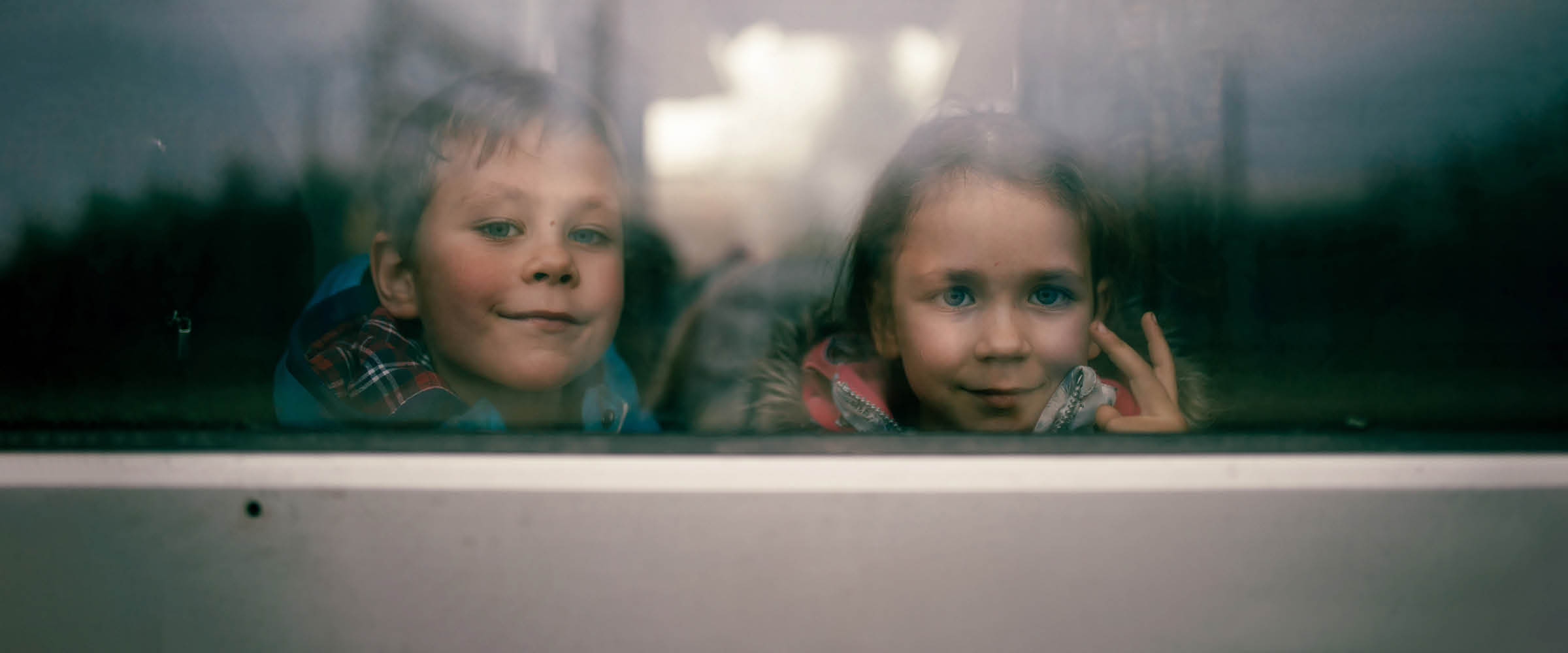Ukraine War Prompts Flood of Misinformation, Fake News

BIRN – The conflict has triggered the spread of fake news and disinformation in Serbia, Bosnia and Hungary, while religion and nationalism inspire some violations in Bosnia and North Macedonia.
As events in Ukraine continue to unfold quickly and dramatically, children and young people are in danger – one million are already on the move.
This tipsheet brings together advice from Dart fellows who have reported on children in war and other emergency situations.
1. Ask yourself if you really need to approach a child for your story
If you want to interview a child, can you get the story from an adult instead, and engage the child only to play and fill in other details? Can you tell the story by using other resources, such as data? “Children’s stories can often be communicated without focusing on the possibly traumatic event you’re trying to cover. Asking simple questions that may not trigger a child in a traumatic situation, like their age, name, favorite food are ways to include the child in the report but without risking their well-being for your story,” says Cengiz Yar, a documentary photographer and photo editor currently based in El Paso, Texas, who authored “Syria’s children” documentary project.
2. In fast-moving situations, trust is important
This is especially important for visual journalists, as Donna De Cesare, an award-winning photographer and Associate Professor of Journalism at the University of Texas in Austin, points out. “In fast moving situations you can’t always safely talk to the people in the photographs you make, but you should always attempt to do so. This helps avoid the problem of making assumptions about what is going on based on appearances and will provide you with more accurate and detailed captions. You can signal who you are with a press badge, body language and eye contact. Trust is especially important, and transparency and respect are helpful,” she says.
3. Explain who you are and get consent
Some people may be less used to journalists than others, so be respectful and understand the context first. Initially, you may have to learn more about the child’s family — is an older sibling is now in charge? Talk to the child’s family and explain why you are there and what you are doing. For example, give details of the publication you work for, the format you will be using, and explain why this interview is important. When you have consent, repeat to the child that their parent or guardian is OK with the interview, and try to get their consent too. Children may feel helpless in a context of emergency, and being asked directly for their permission can give them a sense of agency, says Kate Porterfield, a consulting clinical psychologist at the Bellevue Hospital Program for Survivors of Torture in New York City.
4. Don’t overpromise
You are neither a psychologist nor a friend, so don’t promise that a child will feel better if they talk to you. Also, make sure the people you are interviewing know that your work is unlikely to change their personal situation, but may be able to help others in the future. Ismail Einashe, an award-winning writer and senior journalist at Lost in Europe, a cross-border journalism project that investigates the disappearance of child migrants in Europe, says it is important to be upfront. This is one of the ways he approaches families: “Speaking to me will not change your situation, but it may help people understand the plight of people in displaced camps, or experiences of child refugees.”
5. Introduce your team and your equipment
If you are with a larger team or are using audio, photographic or video equipment, take time to introduce the rest of the team and make the child familiar with the process. You can have them listen to the surround sound or see how a camera works. If you have a portable printer or a Polaroid, sharing a printed picture can also be a great way to show them what your process is and can help break the ice.
6. Think of the location and set-up
Make sure the child feels safe, there is a trusted adult around, and the location is as safe and comfortable as the situation allows. Be at eye level if you can, by squatting or sitting down, because you don’t want to overpower them. If you cannot hear each other without shouting, consider moving in closer if the child is quiet. If you are working through an interpreter, make sure they are also aware of what you are trying to do and they translate you accurately when you are checking in or making small talk.
7. Be empathetic
During the interview, remember there is a child in front of you and be empathetic. “Think about how you would want a journalist treating your child if roles were reversed,” says Yar. The child may not be willing to sit down for more than a few minutes, so you can use play, sport or art to connect instead. “Parents often play with children as a way of protecting them from trauma. Children reveal things in their drawings and in their playfulness,” says De Cesare. Follow their pace and don’t rush them. Also, pay attention: if you need to check your recorder or look away to check your camera, make sure you explain why you are not focusing on them. “Give children as much agency as possible in the interview process. Let them lead the story with their own experiences and don’t force a particular narrative on them,” says Einashe. Also don’t say things like “I understand how you feel” — because you may not.
8. Do no harm
If the child is willing to talk about their feelings and their trauma, use techniques that will not traumatize them again. For example, you can consider asking the adult any difficult or hard questions in a separate room and away from earshot of the child, says Yar. You can also apply several psychological techniques and frames, as suggested by Kate Porterfield. You can reflect back what you hear (“I hear you saying… is that right?”), which helps you verify your information while providing the child with validation of what they said. You can also use a technique called “mastery”, which basically gives the child the possibility to see that they have something worthwhile sharing, and may be a good way to wrap up an interview. (“I would like you to help me so I can tell other kids about…” or “Before we go, can you teach me about…”) Finally, make sure that the interview you carry out does not put the child in danger. If you take pictures or video, ask yourself and your subjects if it is safe to share the child’s name and identity. Before publication, check again with editors or colleagues and ask yourself if there is a potential danger you hadn’t seen before.
9. Steer away from the victim or hero narrative
Beware of simplistic binaries, says Einashe. “There is this tendency to describe children as very traumatized or exceptional. Think of the nuance in the story and don’t look for extremes,” he says. When writing the story, think about the everyday life of the child and steer away from sensationalist narratives that turn children into victims or heroes. A child can be brave and scared at the same time, and showing those nuances is possible by choosing quotes, adjectives and scenes carefully. The same is true for visual journalism. “Images of children reacting emotionally and isolated in the frame are powerful but beware of oversimplifying or stereotyping,” says De Cesare. “We learn a lot about how children are coping — their vulnerabilities, needs and resilience — from images which show them in their context.”
10. Look after yourself
The reporting will be fast-paced and you may also be in danger, but see if you can take a break from your phone and get some rest. Make sure you find time to process your emotions when you can, and seek help if you need to. The Dart Center has several resources for journalists on how to cope with trauma.
This article is a reproduction of the original article that can be found here.
